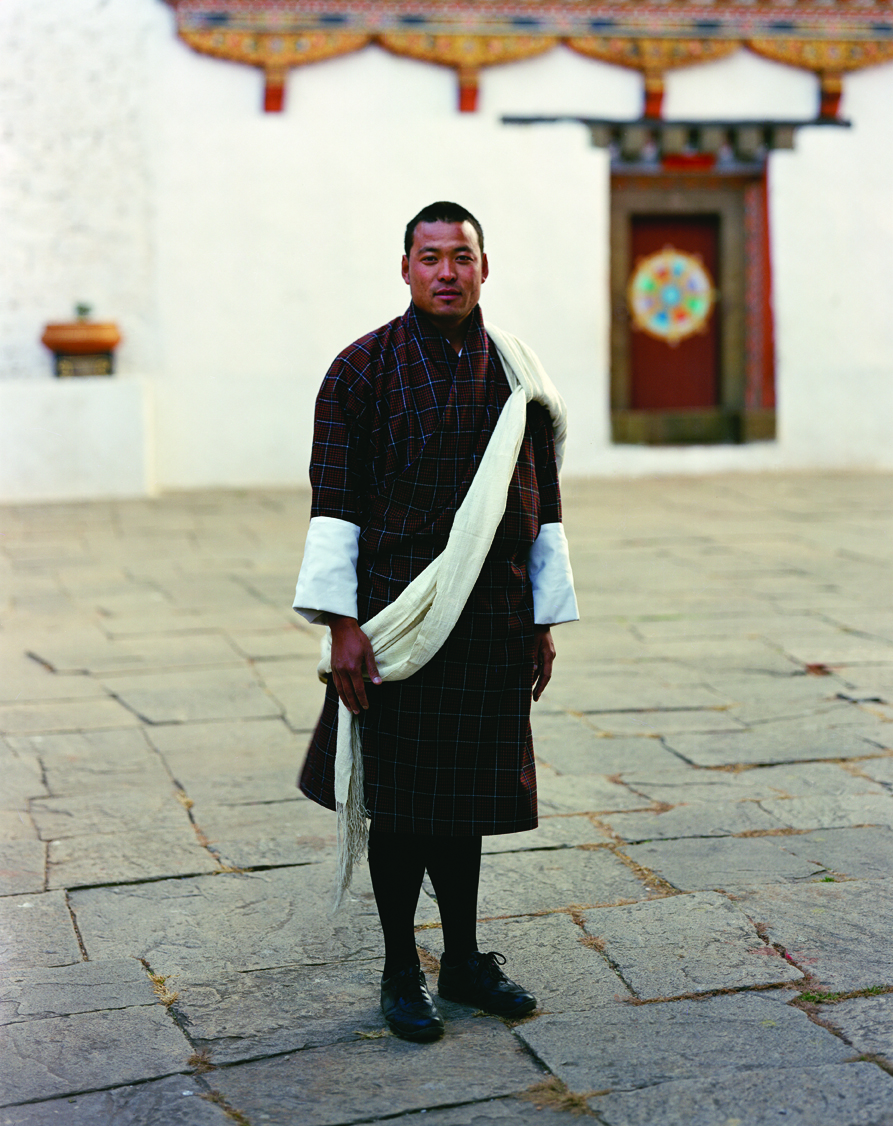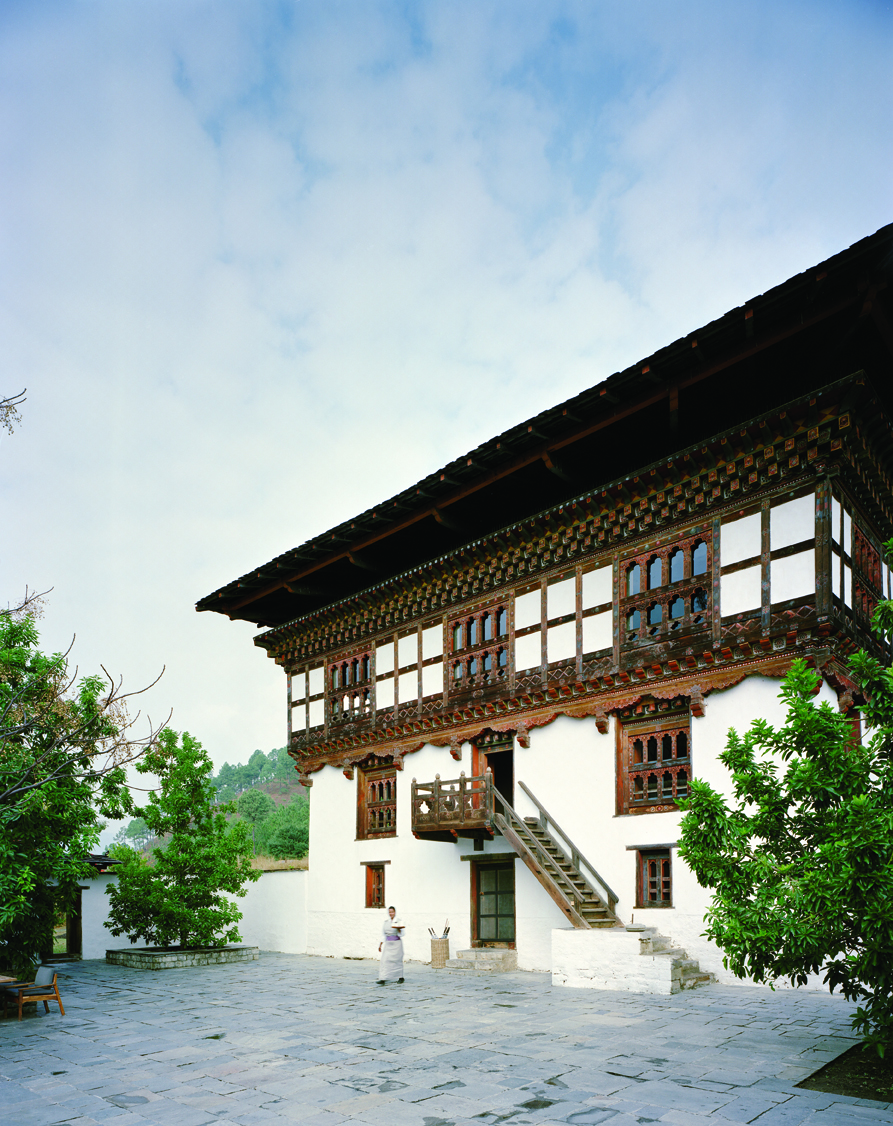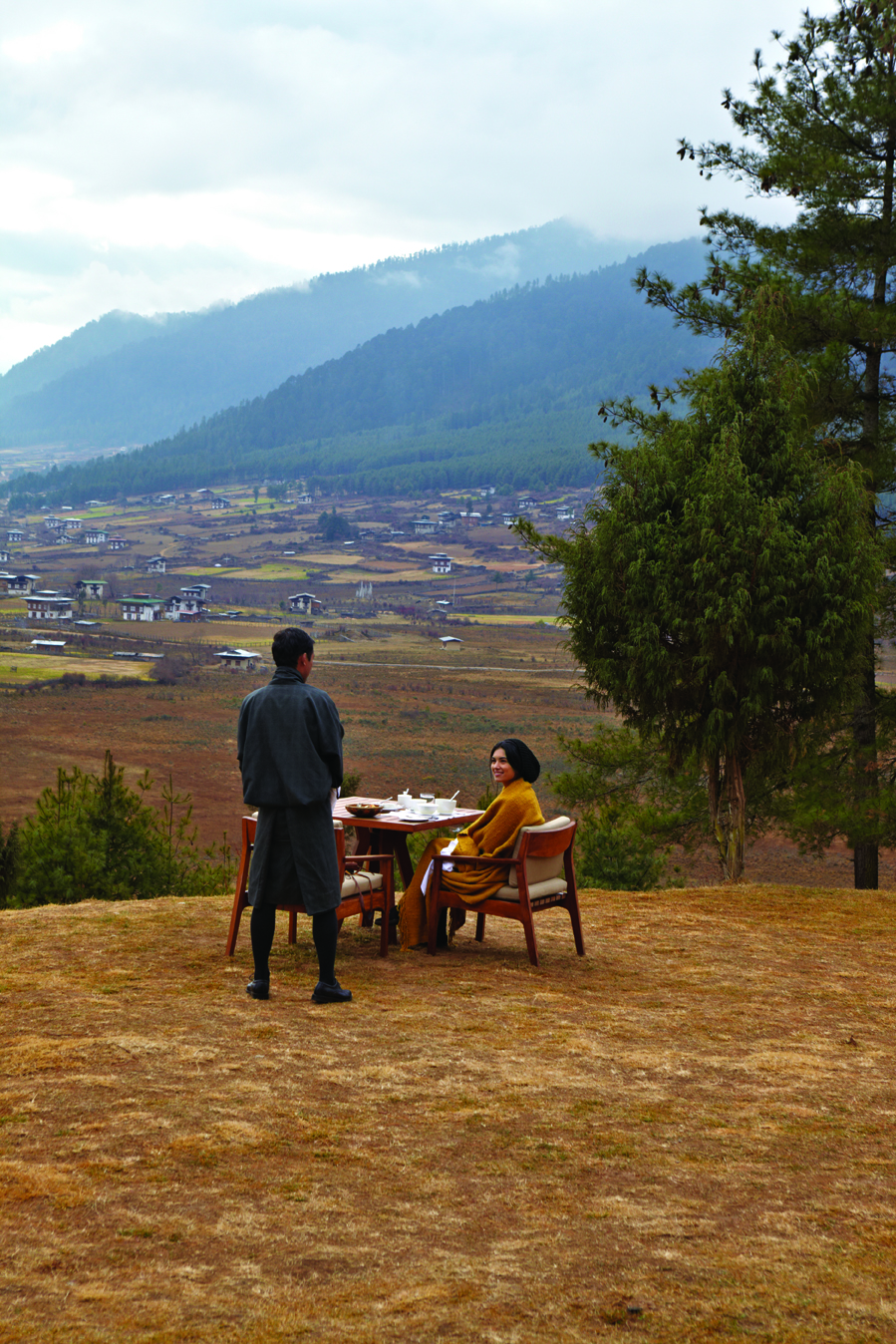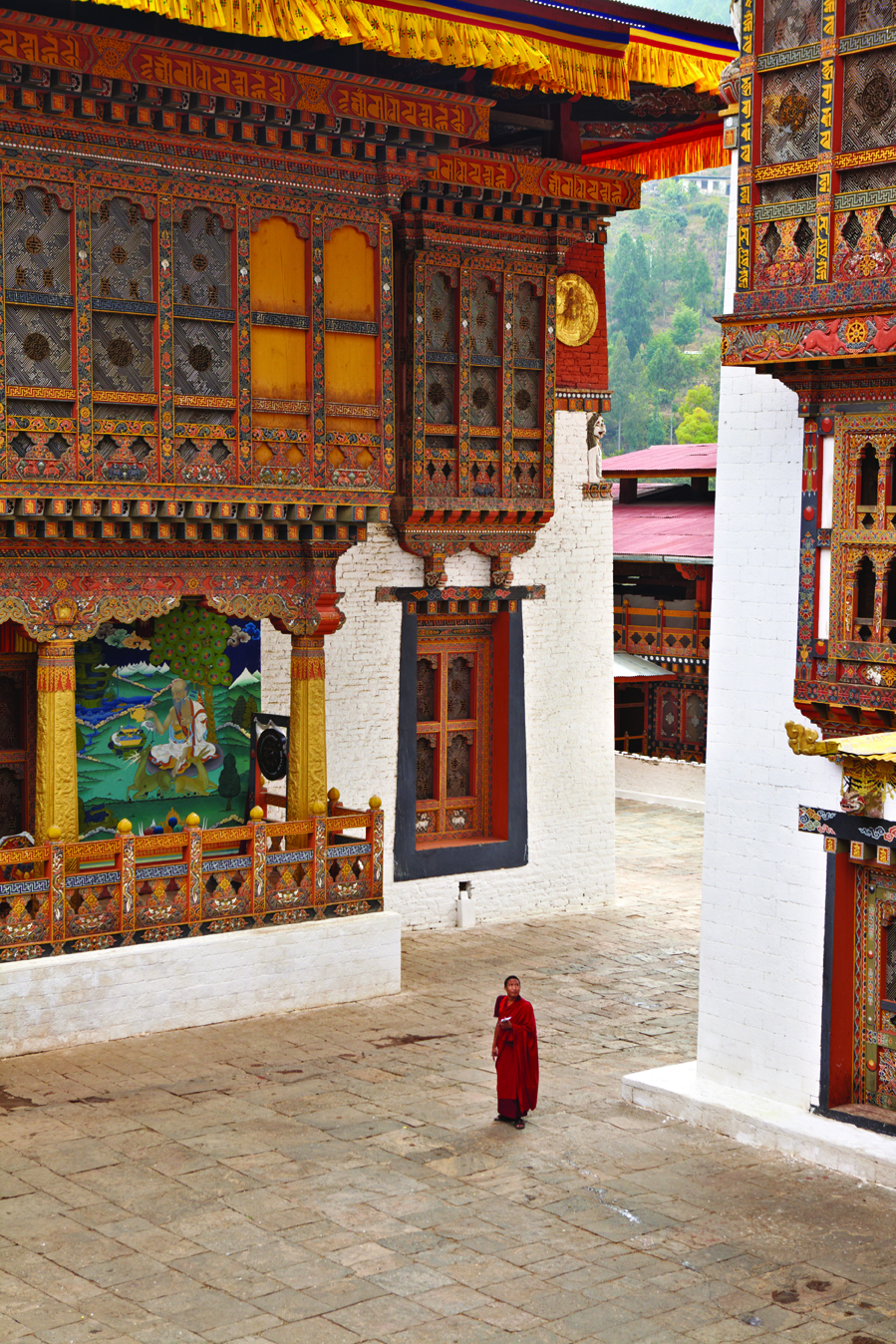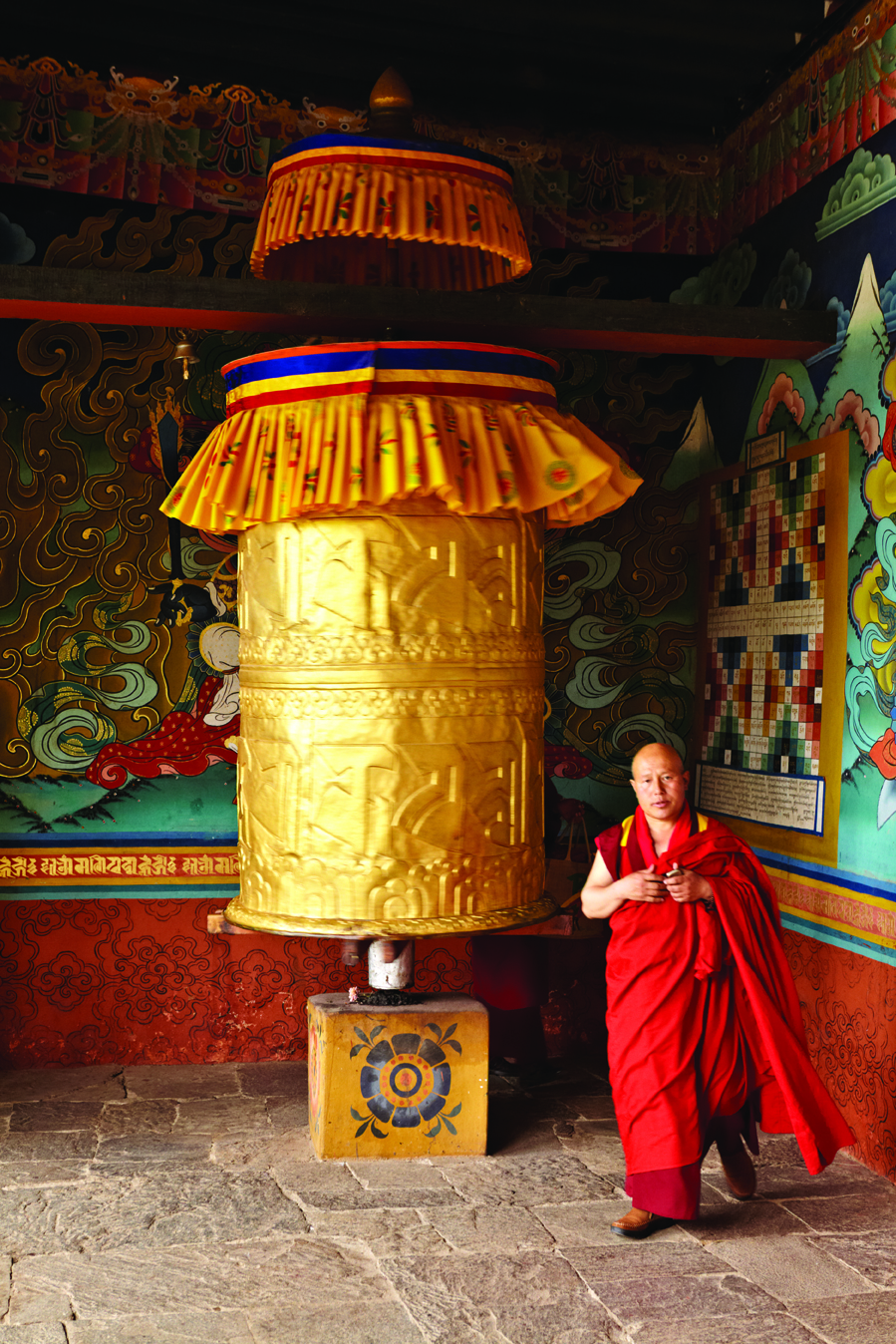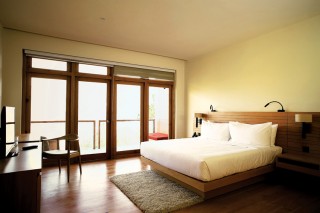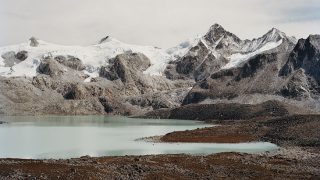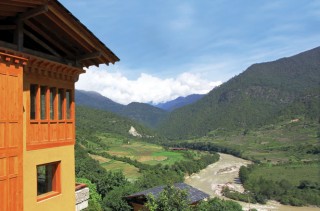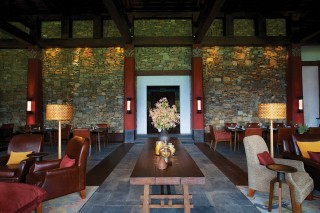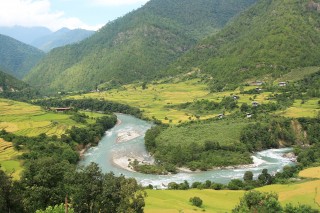Nestled high in the eastern Himalayas, the tiny realm of Bhutan beckons with sublime scenery, good-natured locals, and remote luxury lodges that offer an altitudinous antidote to the country’s grueling mountain roads.
By Christopher P. Hill
Photographs by Martin Westlake
“So how do you like your road massage, Ap Chris?” asks my wisecracking guide, Sangay Dorji, as our Hyundai minivan jounces around yet another cliff-hugging bend on the descent from Dochula Pass. Slumped queasily in the back, I barely register the joke before Sangay swivels around, bright-eyed, to deliver the punch line. “Don’t you worry, it’s a complimentary massage. You don’t have to pay, ha ha ha!”
Dapper in a plaid gho and clearly unfazed by Bhutan’s vertigo-inducing mountain roads, Sangay has kept us entertained with an arsenal of bons mots (“What makes a perfect marriage in Bhutan? The husband should be deaf, the wife should be blind, ha ha ha!”) since picking us up at the airport in Paro the day before. Yet for all his comedic shtick, the 28-year-old also has a remarkable head for local facts and figures, which he rattles off as though channeling Bhutan’s Wikipedia page. And so, zigzagging down the side of a mountain cloaked in alder, cypress, bamboo, and eucalyptus, we learn that Bhutan, a country about the size of Switzerland, covers 38,394 square kilometers. That it is home to 620 species of birds, 46 types of rhododendron, 2,674 glacial lakes, and (at last count) 716,896, people. That almost half of its small but plucky economy derives from hydroelectric projects, which generate 1,500 megawatts of power, most of which is exported to neighboring India. That 72 percent of the country is forested. Oh, and that on this dusty, sinuous stretch of road, there’s a curve every nine seconds.
As I mull that statistic, an overloaded and gaily decorated truck rumbles past us on a hairpin bend, the words Good Luck painted on its cab door. I ask Sangay just how much luck we might need.
“Nothing to worry about, Ap Chris. My friend Lekey”—he nods to our intensely focused driver—“is very talented. A real professional. He is the Michael Schumacher of Bhutan! Ha ha ha!”
Bhutan seems to revel in its remoteness and mystique. The only practical way in and out of the cloistered kingdom is with its sole airline, Drukair, whose fleet consists of just three Airbus jets and a 48-seat turboprop, and whose pilots must undergo rigorous training before tackling the mountain-skimming approach to the Paro Valley. Tourism, which began here only in 1974, is restricted; visitors are required to travel as part of a pre-arranged package or guided tour, a measure designed to keep at bay the hordes of backpackers that have overrun Nepal. There are no traffic lights, no high-rises, no billboards; no Starbucks or KFC outlets. And rather than measuring its prosperity in terms of gross national product, Bhutan, famously, uses a somewhat arcane index called Gross National Happiness, which emphasizes sustainable development alongside cultural and environmental preservation.
For the visitor who can abide the country’s treacherous roads and diabolical cooking, this is all a good thing. Once-feudal Bhutan no longer lives in self-imposed isolation—television and the Internet arrived 14 years ago—but it is still breathtakingly exotic, and not just because of the thin Himalayan air. For one, Bhutan is among the last strongholds of Tantric Buddhism, which came across the mountains from Tibet in the seventh century; a palpable vein of spirituality runs through its far-flung communities. For another, there’s evocative architecture, from the massive stone citadels known as dzongs (part monastery, part town hall) to the half-timbered farmhouses of the countryside. Regulations require that all buildings incorporate vernacular flourishes such as hipped roofs and wood-framed windows, so even towns like Thimpu, the capital, project a medieval aura. There’s a dress code as well, which obliges Bhutanese to wear traditional garb in public during daylight hours—the tunic-like gho with knee-high socks for men, and for women, a belted dress called a kira, fastened with a pair of shoulder brooches over a long-sleeved blouse. It can leave you feeling like you’ve stepped into a costume drama.

